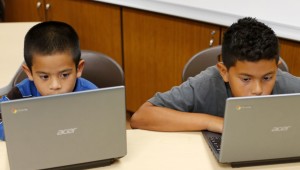27 May 2016 – Over at Quartz, Globaloria CEO Idit Harel argues that American schools are teaching kids how to code all wrong. She writes:
The light and fluffy version of computer science — which is proliferating as a superficial response to the increased need for coders in the workplace — is a phenomenon I refer to as “pop computing”.
While calling all policy makers and education leaders to consider ‘computer science education for all’ is a good thing, the coding culture promoted by Code.org and its library of movie-branded coding apps provide quick experiences of drag-and-drop code entertainment.
Yes, this accessible attraction can be catchy, it may not lead to harder projects that deepen understanding. You mean the “first President to write a line of computer code” may not have progressed much beyond moving Disney Princess Elsa forward?
Harel says there must be a distinction drawn between “coding tutorials” and learning “computer science.” Building an app, for example, can’t be done in a couple of hours, it:
requires multi-dimensional learning contexts, pathways and projects. Just as would-be musicians become proficient by listening, improvising and composing, and not just by playing other people’s compositions, so would-be programmers become proficient by designing prototypes and models that work for solving real problems, doing critical thinking and analysis, and creative collaboration — none of which can be accomplished in one hour of coding.
